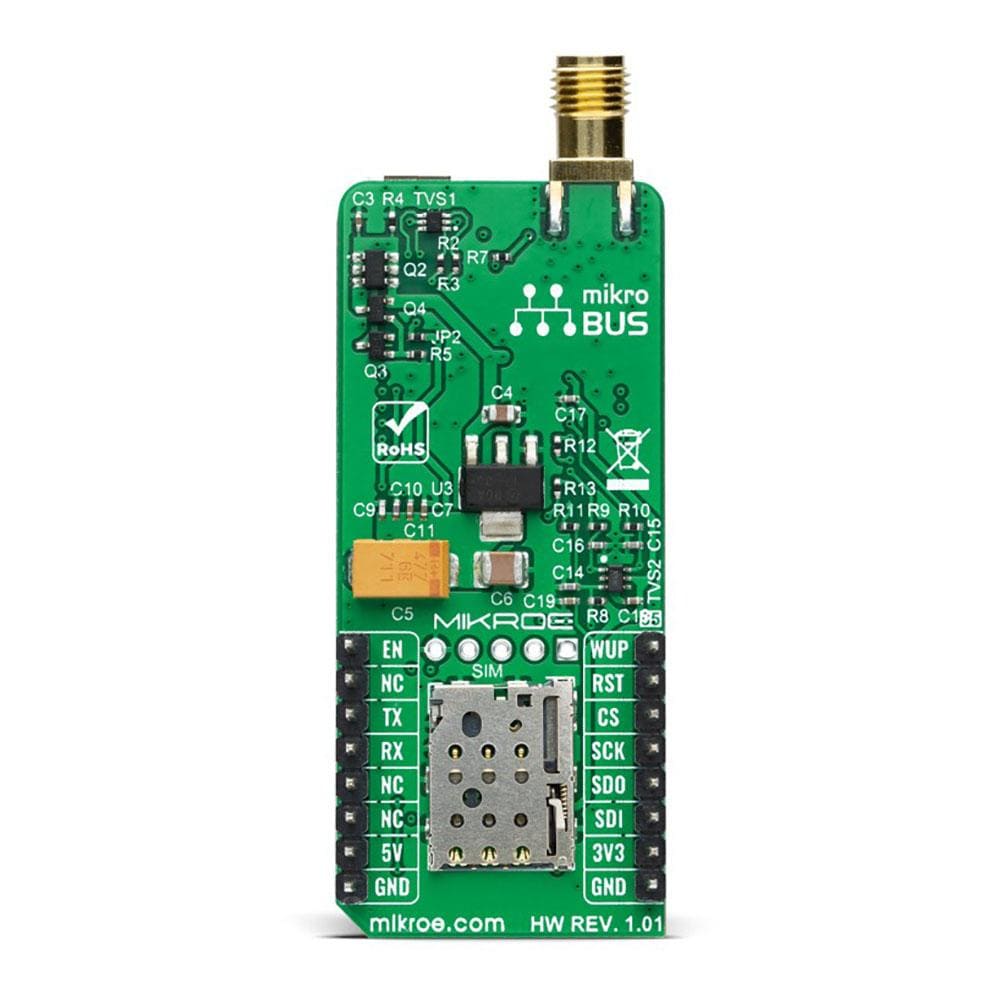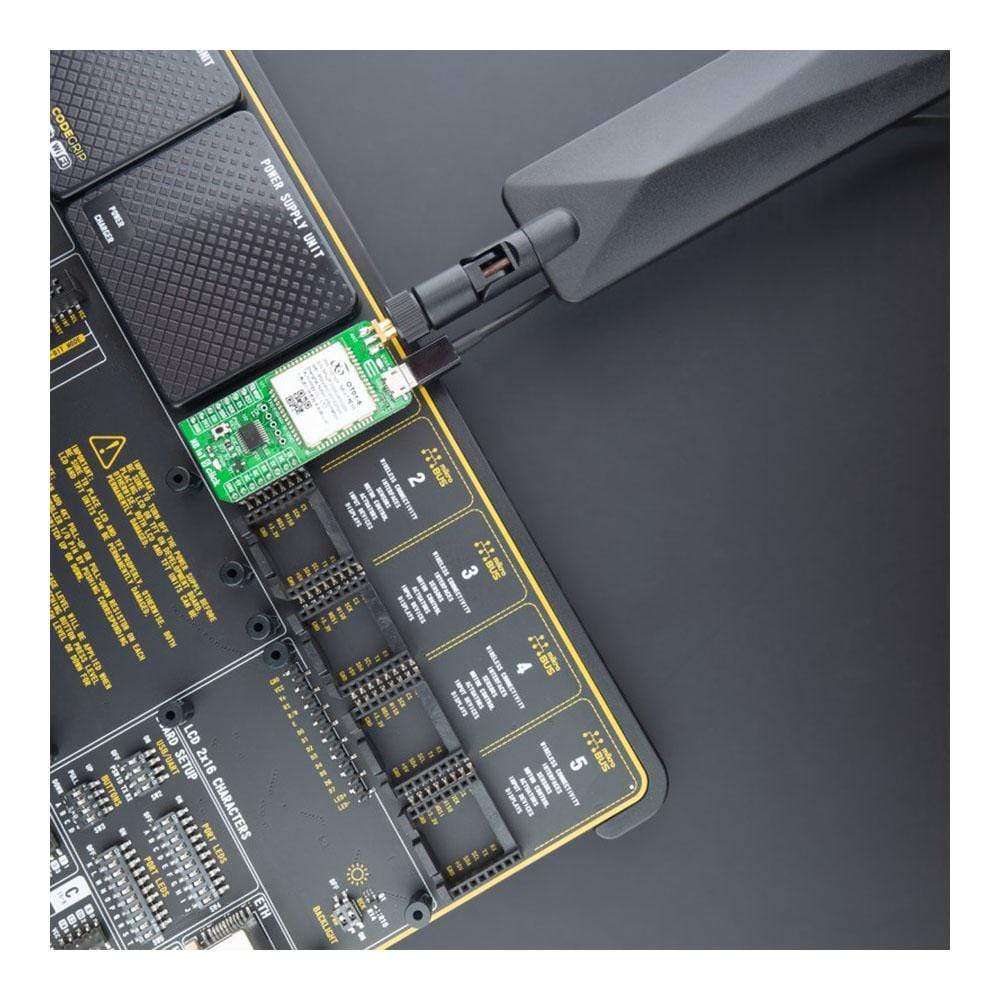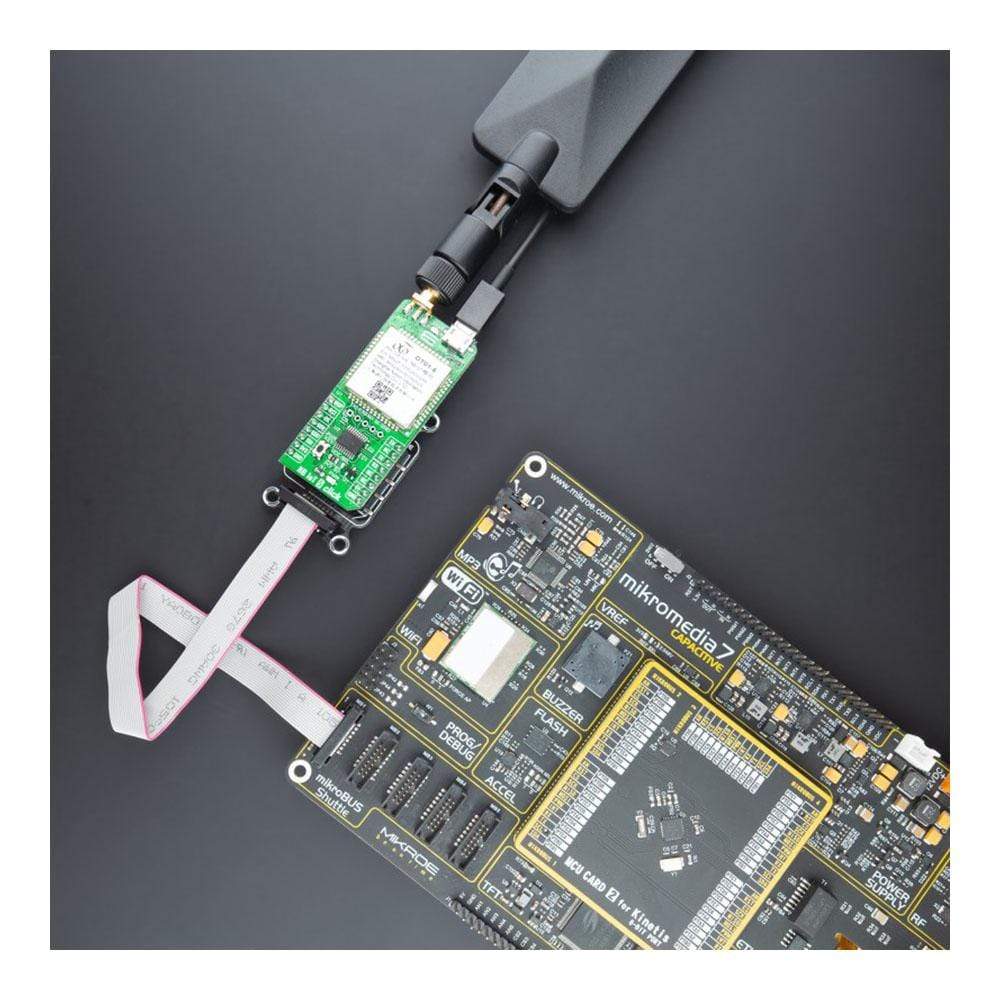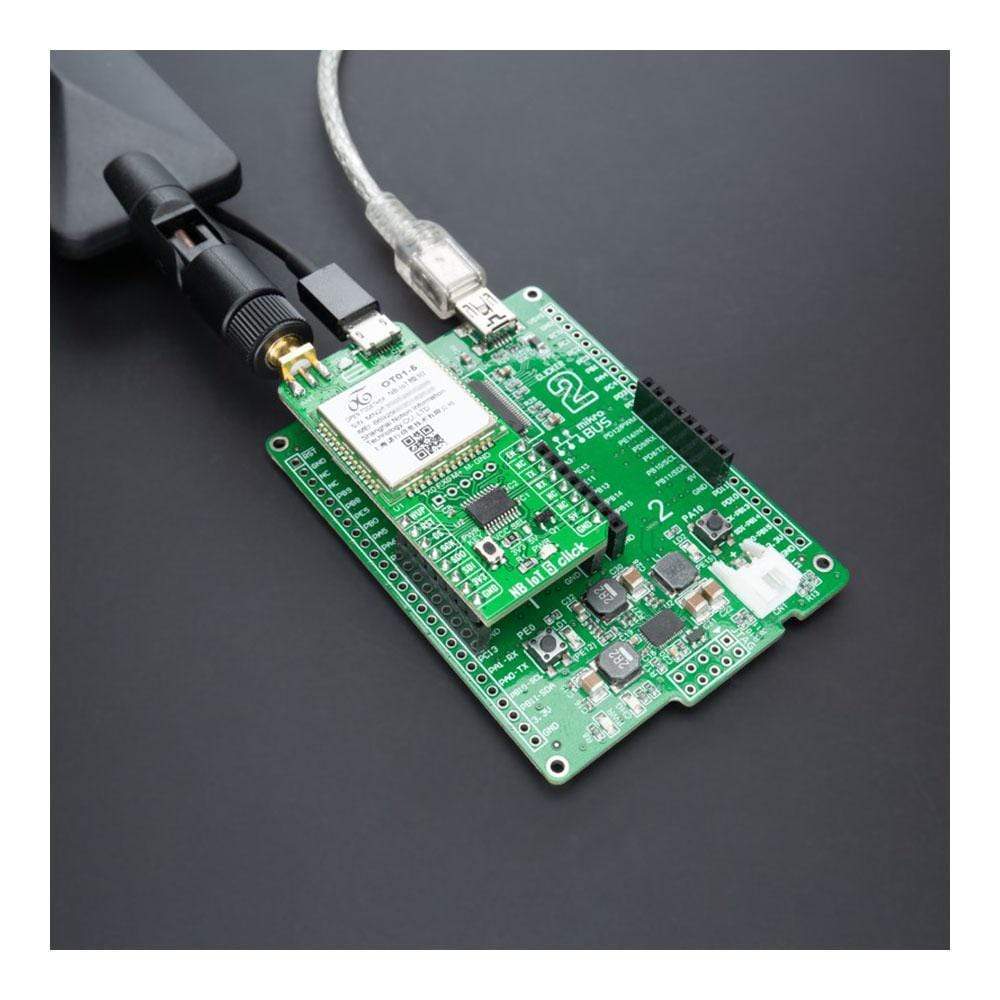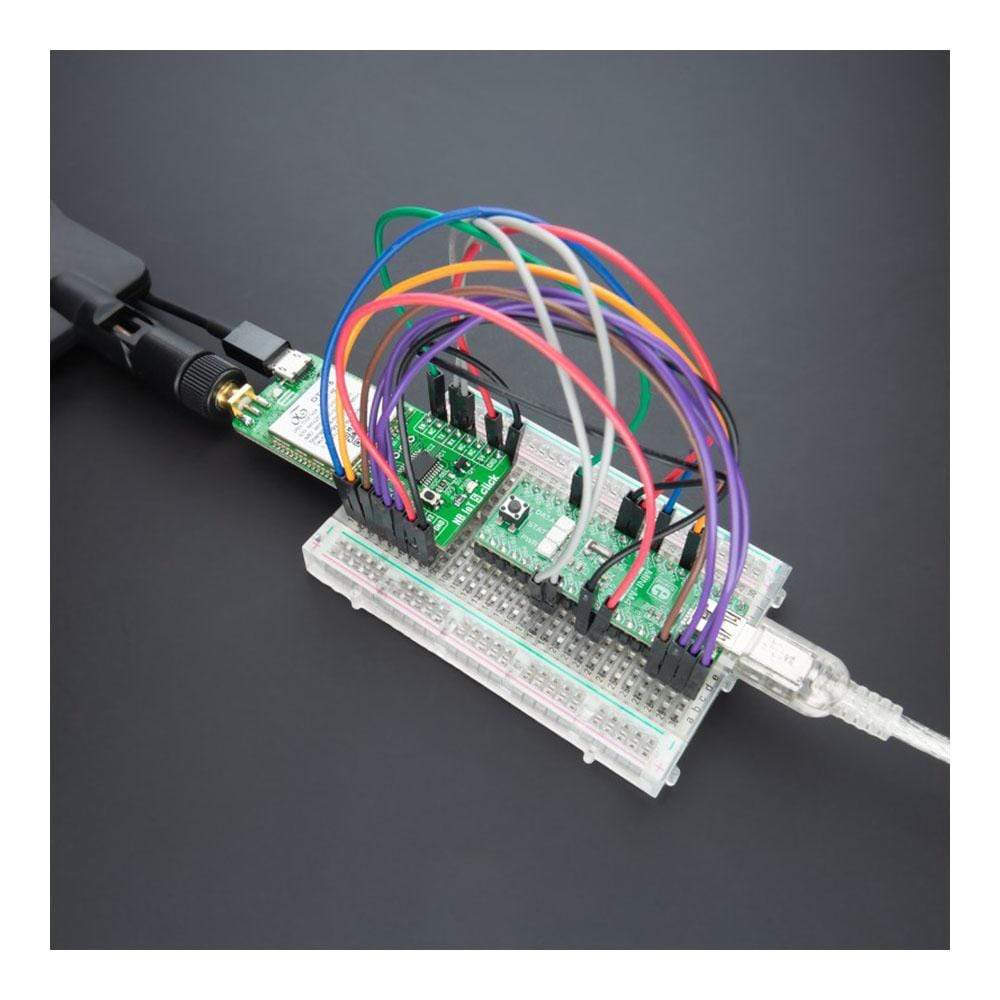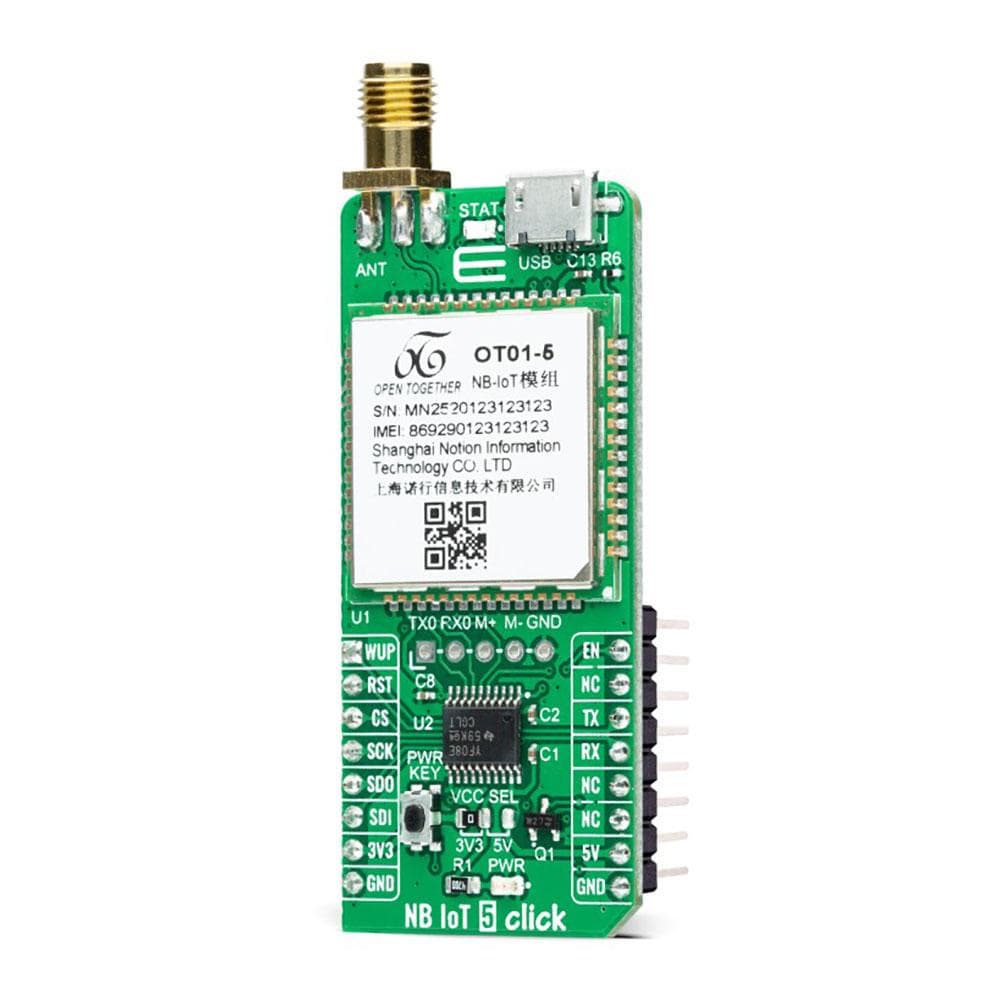
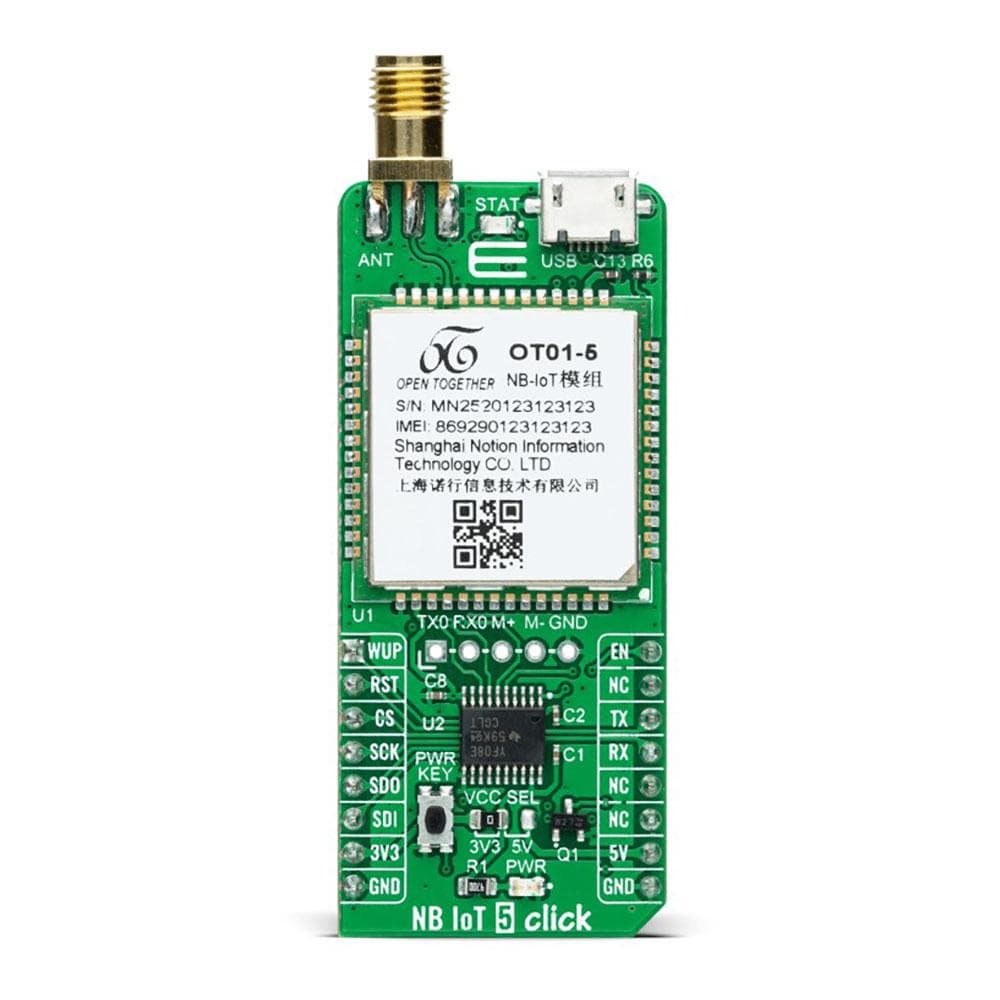
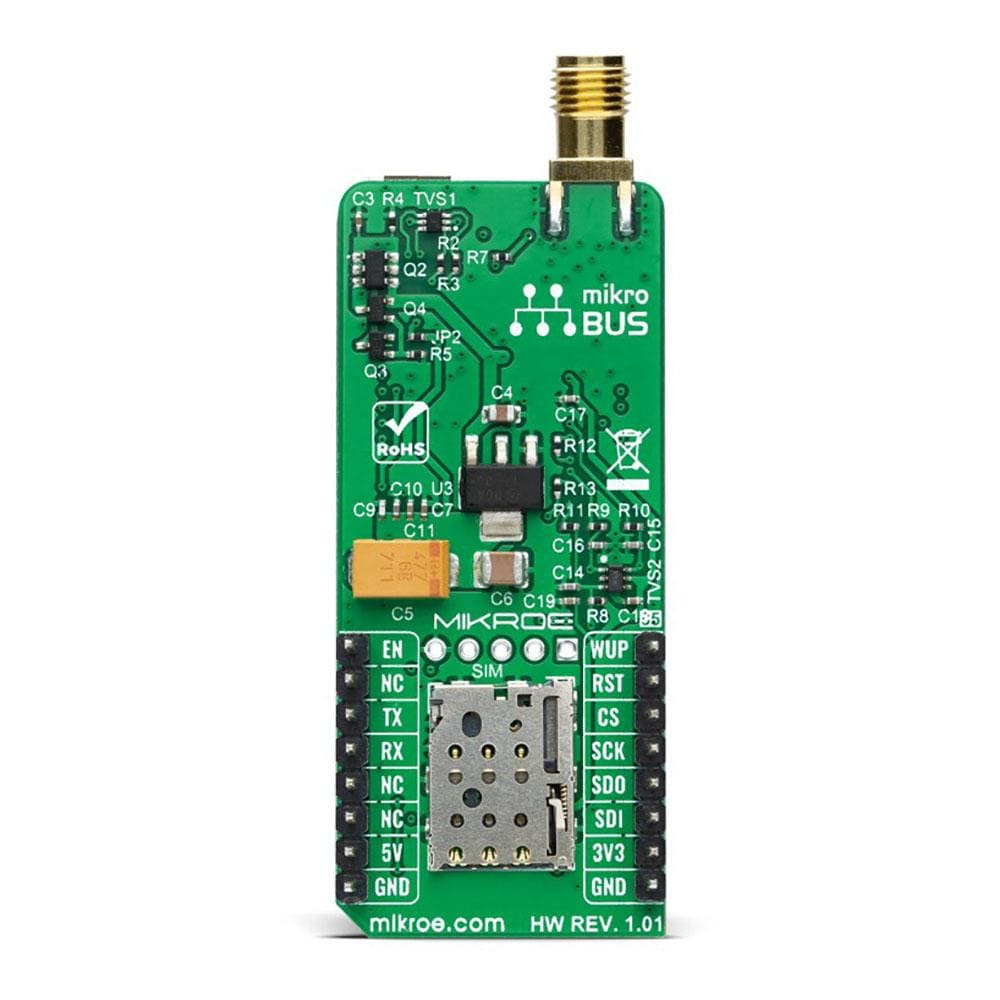
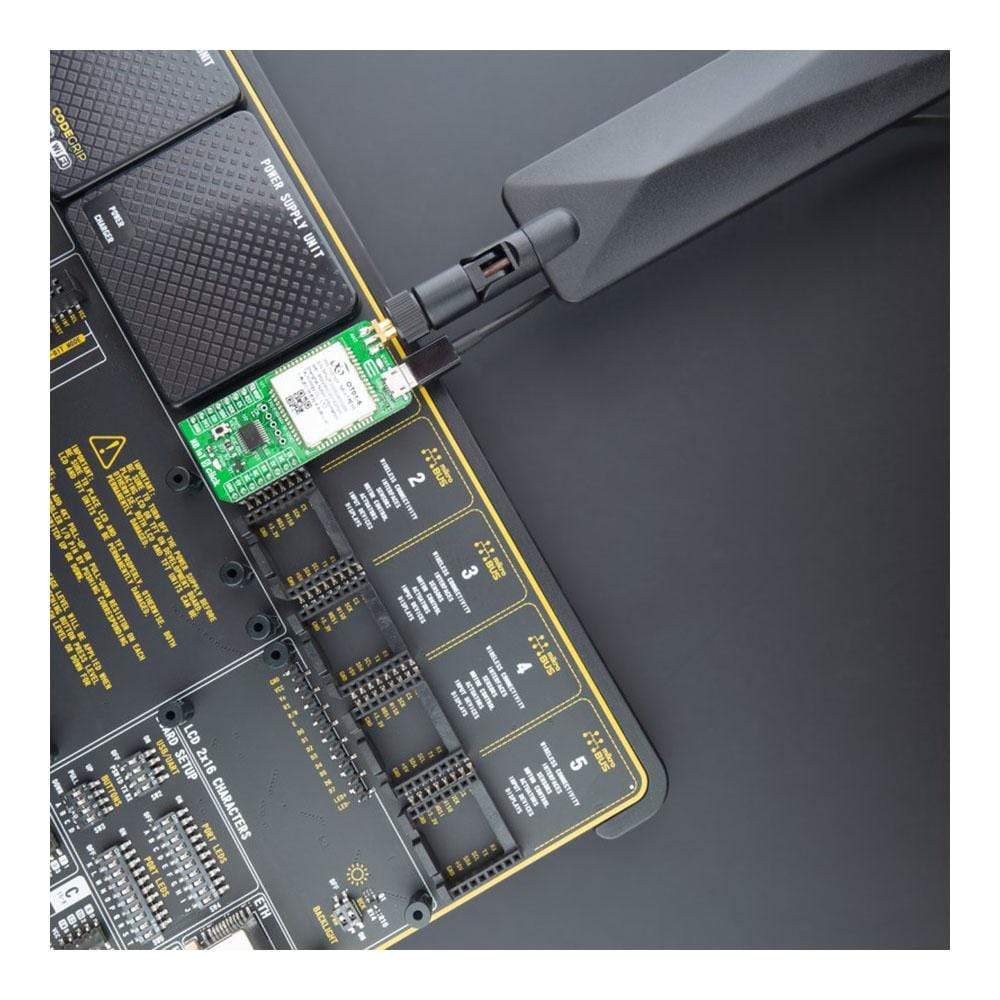
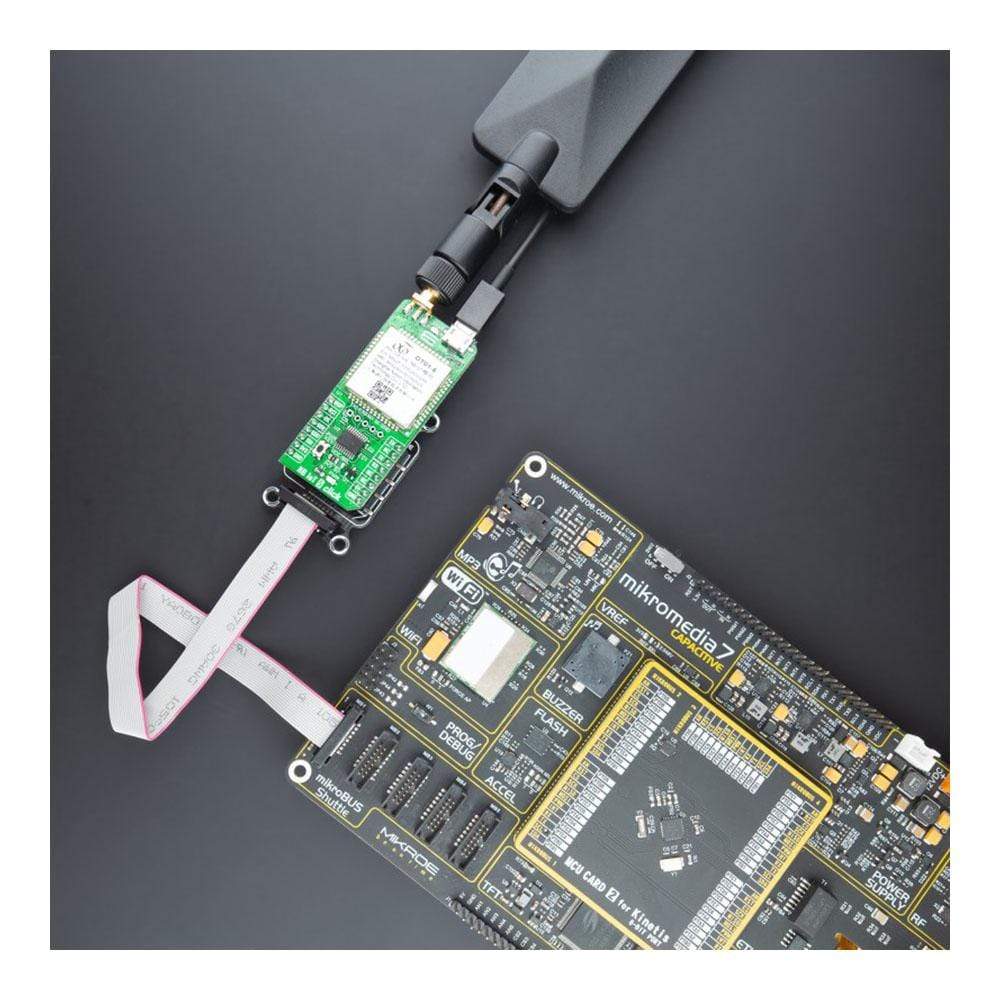
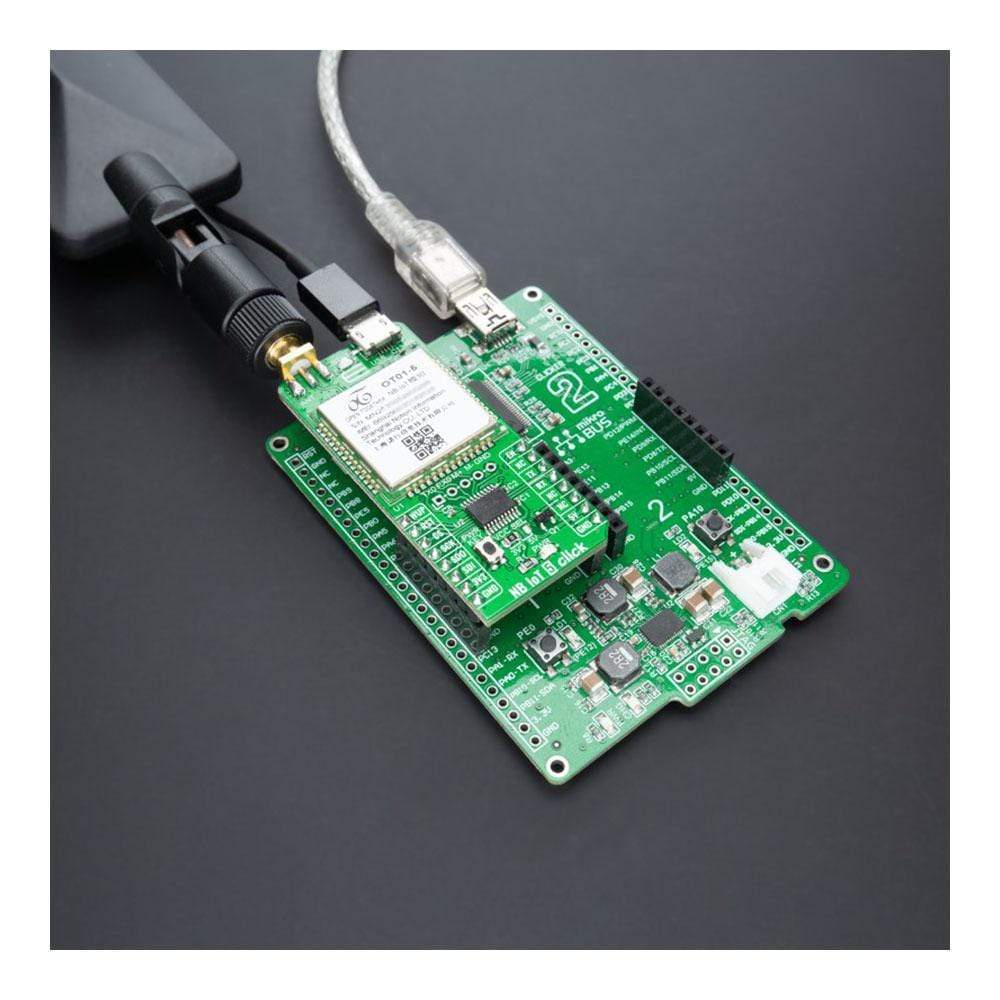
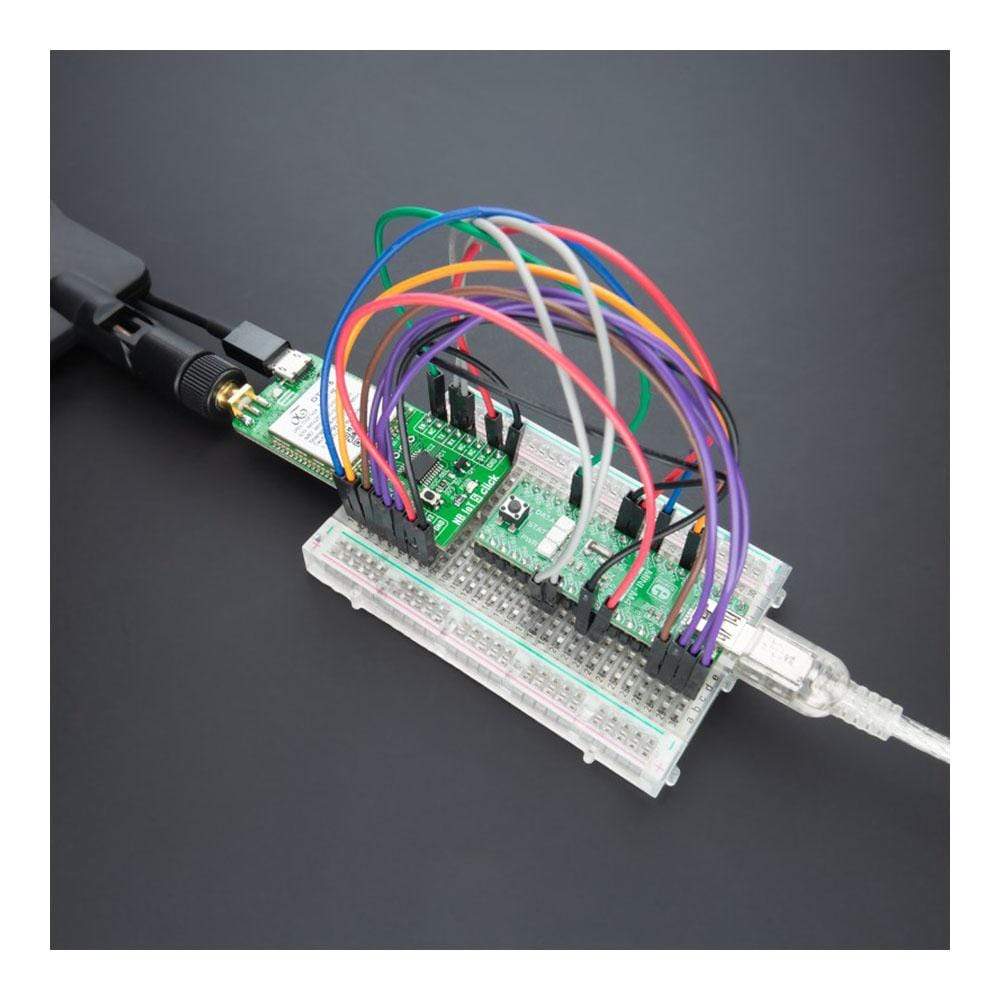
Overview
The NB IoT 5 Click Board™ is a compact add-on board suitable as narrow-band Internet of Things universal wireless communication solution. This board features the OT01-5, a high-performance NB-IoT module with ultra-low power consumption allowing battery life of about ten years from Notion. It supports a broad range of frequency bands almost worldwide. It provides serial interfaces, UART and SPI, with protocol stacks such as UDP/TCP, CoAP, LWM2M, and others. It offers an alternative to similar Low Power Wide Area Network (LPWAN) solutions. This Click Board™ is suitable for many IoT applications such as intelligent gas/water meters, information collection, security monitoring, smart city/home, and other applications.
The NB IoT 5 Click Board™ is supported by a mikroSDK compliant library, which includes functions that simplify software development. This Click Board™ comes as a thoroughly tested product, ready to be used on a system equipped with the mikroBUS™ socket.
Downloads
Das NB IoT 5 Click Board™ ist eine kompakte Zusatzplatine, die sich als universelle drahtlose Schmalband-Kommunikationslösung für das Internet der Dinge eignet. Diese Platine verfügt über das OT01-5, ein leistungsstarkes NB-IoT-Modul mit extrem niedrigem Stromverbrauch, das eine Batterielebensdauer von etwa zehn Jahren von Notion ermöglicht. Es unterstützt eine breite Palette von Frequenzbändern fast weltweit. Es bietet serielle Schnittstellen, UART und SPI, mit Protokollstapeln wie UDP/TCP, CoAP, LWM2M und anderen. Es bietet eine Alternative zu ähnlichen Low Power Wide Area Network (LPWAN)-Lösungen. Dieses Click Board™ eignet sich für viele IoT-Anwendungen wie intelligente Gas-/Wasserzähler, Informationserfassung, Sicherheitsüberwachung, Smart City/Home und andere Anwendungen.
Das NB IoT 5 Click Board™ wird durch eine mikroSDK-kompatible Bibliothek unterstützt, die Funktionen enthält, die die Softwareentwicklung vereinfachen. Dieses Click Board™ ist ein gründlich getestetes Produkt und kann auf einem System verwendet werden, das mit der mikroBUS™-Buchse ausgestattet ist.
| General Information | |
|---|---|
Part Number (SKU) |
MIKROE-4472
|
Manufacturer |
|
| Physical and Mechanical | |
Weight |
0.02 kg
|
| Other | |
Country of Origin |
|
HS Code Customs Tariff code
|
|
EAN |
8606027381935
|
Warranty |
|
Frequently Asked Questions
Have a Question?
Be the first to ask a question about this.



